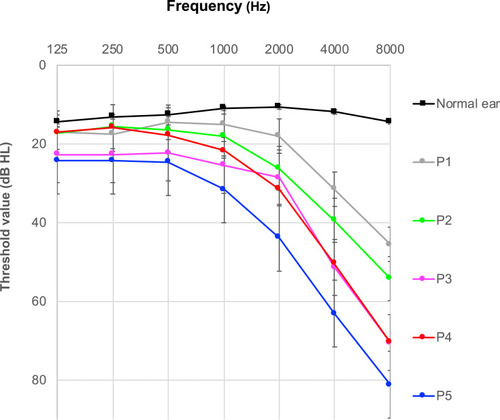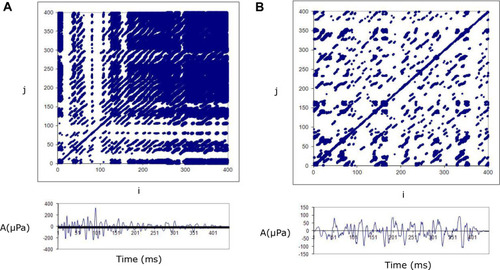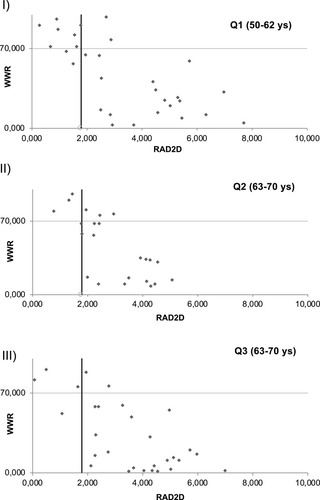Figures & data
Table 1 (A) Mean Values of REC, DET, RAD2D and WWR in the Normal and ARHL Groups. (B) Mean Values of These Parameters Across the 5 ARHL Sub-Groups (The Same of )
Table 2 Mean Values of REC, DET, RAD2D and WWR Parameters Across the 3 ARHL Sub-Groups (Q1, Q2, Q3)
Figure 1 Mean pure-tone hearing thresholds averaged, from the normal and the ARHL TEOAE data.

Figure 2 TypicalCitation32 recurrence plots (top panel) and the corresponding TEOAE responses (bottom panel) from a normal and an ARHL case.

Figure 3 WWR vs RAD2 in the ARHL group.

Figure 4 WWR vs RAD2 in different ARHL age groups.

